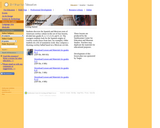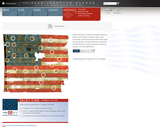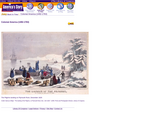
This parent guide supports parents in helping their child at home with the 2nd Grade Social Studies content.
- Subject:
- Social Studies
- Material Type:
- Curriculum
- Reference Material
- Vocabulary
- Author:
- Kelly Rawlston
- Letoria Lewis
- Date Added:
- 03/06/2023

This parent guide supports parents in helping their child at home with the 2nd Grade Social Studies content.

This resource accompanies our Rethink 2nd Grade Social Studies History unit. It includes ideas for use, ways to support exceptional children, ways to extend learning, digital resources and tools, tips for supporting English Language Learners and students with visual and hearing impairments. There are also ideas for offline learning.

In this lesson, students will learn about Celia Cruz and the use of objects to discuss people. They will understand how artifacts can help us understand people in the past.

Our final chapter in 2nd grade is all about history - how we study it and how we learn about places - especially our community. The authors recognized early on that it would be impossible for us to write a community history for every community in Michigan, so we continue with our study of two - a small town and a larger town. Our hope is that you’ll have students make connections between these two featured communities and their own. How are they alike? How are they different?

Students will learn about the methods and tools needed to conduct a genealogical interview. It is included in an OurStory module entitled Great Women of Our Pasts.

In these units, students can discover the Spanish and Mexican roots of American cowboy culture in this set of four lessons, divided into grades K–2, 3–5, 6–8, and 9–12. The youngest students look for the Spanish origins of cowboy words (lasso from lazo, for example). Older students do a bit of translation work: they compose a rhyming cowboy ballad based on a Mexican corrido.

Students can use their senses to see, smell, and feel what it would have been like to live on the prairie long ago.

In this lesson, students practice using language related to chronology. They work with the histories of their own lives as well as the history of their school. They begin to learn about different sources of information.

The lesson addresses how the community is impacted by innovators like George Washington Carver. Students examine the life of George Washington Carver and other innovators including those in the local community to learn about and use problem-solving skills and imagine themselves as problem-solvers and innovators.

Students will examine an historical newspaper, a piece of historical fiction, and their social studies textbooks for accounts of the civil rights movement, and then define 'equality' and 'discrimination'. They will then use these definitions to look for instances of equality and discrimination in modern society.

Students will take a trip to explore the architecture in their communities, hunting for specific features from the Field Guide and using the suggested discussion questions.

The lesson addresses how the community is impacted by innovators like George Washington Carver. Students examine the life of George Washington Carver and other innovators including those in the local community to learn about and use problem-solving skills and imagine themselves as problem-solvers and innovators.

Students will discuss, investigate, reflect, and make a photograph connected to the American flag. They will then write a detailed description that responds to one or more prompt questions and share both photographs and descriptions online.

Students can access an interactive resource around the United States Flag from Fort McHenry which the Star-Spangled Banner poem was written about.

This resource provides a photograph of the landing of the Pilgrims on Plymouth Rock, December 1620, in Colonial America. Click on links for other photographs in order to compare characteristics of this time period.

In this video, students will learn about the flag from the War of 1812 which is on display at the Smithsonian Museum. They will learn about the history of the flag and the efforts which are being made to preserve it.

In this activity, elementary students act as history detectives as they explore the historical question and analyze carefully chosen clues to formulate and test hypotheses. The teachers will gather primary and secondary sources that will serve as clues for students such as letters, diary entries, maps, statistical tables, images, and artifacts for students to touch.

In this lesson, students practice using language related to chronology. They work with the histories of their own lives as well as the history of their school. They begin to learn about different sources of information.

This site offers a series of photographs with titles from the era between 1886 and 1894 by John C. H. Grabill. Grabill is known as a western photographer, documenting many aspects of frontier life hunting, mining, western town landscapes and settlers relationships with Native Americans. Teachers can use these photographs for students to compare various interpretations of the same time period. Each photo can be enlarged for clarity.

In this lesson, students examine photographs comparing a classroom for white children with a classroom for African American children.